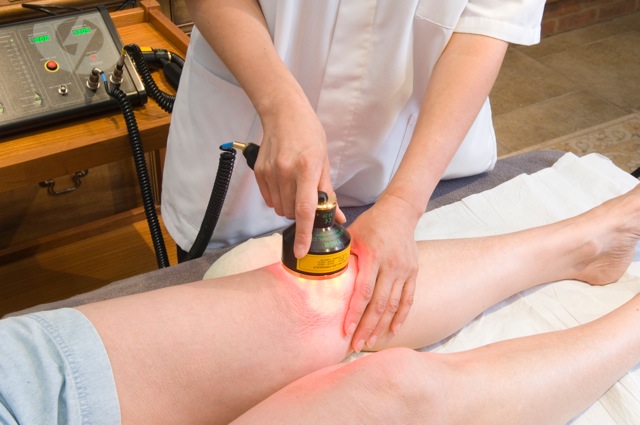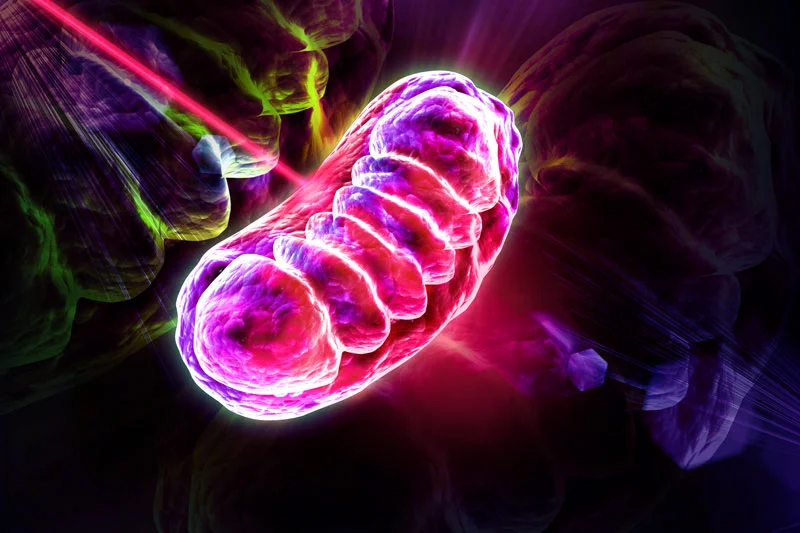Top Guidelines Of Photobiomodulation
Wiki Article
How Photobiomodulation can Save You Time, Stress, and Money.
Table of Contents5 Easy Facts About Photobiomodulation DescribedSome Ideas on Photobiomodulation You Should KnowPhotobiomodulation Things To Know Before You BuyThe Main Principles Of Photobiomodulation
Laser treatment is a medical therapy that utilizes concentrated light to stimulate a process called. During PBM, photons enter the cells and communicate with the cytochrome c complex within mitochondria. This communication sets off a biological cascade of events that leads to a boost in mobile metabolism, which can along with increase the healing process.There is consensus that the application of a therapeutic dose of light to impaired or useless tissue results in a mobile reaction moderated by mitochondrial systems. Photobiomodulation. Researches have revealed that these changes can impact pain and inflammation, in addition to, tissue repair work
Changes in ATP, responsive oxygen types and nitric oxide comply with light absorption by Cc, O. These results are redox state and dosage reliant.

The Best Guide To Photobiomodulation
PBM tools have actually been cleared for marketing by FDA via the Premarket Notification/510( k) process as adjunctive tools for the short-lived alleviation of pain. These clearances were based upon the discussion of medical information to sustain such insurance claims (Photobiomodulation). In this therapy, a source of light is put near or touching the skin, enabling the light power (photons) to penetrate cells where it engages with chromophores located in cells resulting in photophysical and photochemical adjustments that bring about modifications at the molecular, mobile and cells degrees of the bodySurprisingly, recent study shows that light can boost efficiency in normal cells and cells. The possible applications of PBMT are many and are being checked out experimentally at the standard scientific research, pre-clinical and professional level. The present clinical uses are for the relief of pain and inflammation and the treatment of sports injuries.

The treatment criteria and number of sessions needed for PBMT are dependent upon location and reason. PBMT like it normally calls for even more than one therapy for ideal discomfort relief. It might take several therapies for the results to come to be noticeable. records that it can take anywhere from eight to 30 sessions great post to read for a treatment to be completely effective, and some individuals locate it necessary to undertake therapy 2 to 4 times weekly.
Some Known Details About Photobiomodulation
Treatment criteria for PBMT were originally developed using cells artificial insemination and in small pet versions. These treatment criteria typically had a low irradiance and fluence and functioned well for cutaneous applications. When medical professionals started to use PBMT to deal with structures that were situated much deeper in the body, they made use of these parameters with unfavorable outcomes.
We now understand that these negative research studies resulted from incorrect gadget and therapy specifications for transcutaneous treatment of much deeper frameworks. Current advancements in laser treatment gadgets and even more research into the suitable dosages have substantially improved the results of PBMT. For treating deep tissues, the wavelength of light utilized figures out the deepness of infiltration right into a cells.
It is crucial that a clinician utilizes the suitable wavelength of light and parameters to treat a condition. One wavelength and one set of treatment parameters will not work for all problems. Unfavorable side results have actually not been reported from using PBMT (Photobiomodulation). Updated June 27, 2016Juanita j
Light therapy is a non-invasive therapy that functions by raising the capability of the cell to create energy (ATP) to heal the location being treated. Therefore, it can reduce inflammation, swelling, and discomfort in the location. Study in this location is broadening, with more in-depth study documents connected below for those who want to discover more.
Photobiomodulation Can Be Fun For Anyone
In the first experiment, Dr. Endre Mester, used shaved rats and observing how the laser impacted their capability to expand hair contrasted to the team that was not getting LLLT. He located that the group of computer mice getting LLLT had the ability to grow their hair back quicker than the team of mice that didn't obtain LLLT (Hoon C, et al; 2012).This treatment is termed by doing this to differentiate the distinction in Home Page between the lasers some professions utilize to reduce (eg. in surgical procedures, or dental treatments). Low-level light treatment is painless, non-invasive therapy. It is used to reduce swelling, swelling, and persistent joint conditions, lower pain and increase wound recovery of nerves and tissues (Hoon C, et al; 2012).
LLLT has a biphasic response, indicating that reduced dosages are generally seen to be much more beneficial than higher doses. That being stated, doses greater or reduced than the optimal dose doesn't impact (Hoon C, et alia; 2012). Therefore, it can be hard to have studies on LLLT with so several parameters.
Some companies integrated both (LED and laser) to give a much more all-around therapy because lasers can pass through deeper than LED and infrared light (Norman Doidge, The Brain's Means of Recovery, 2015). Throughout therapy, the location that is being treated is subjected to LED light from a Bio, Flex Laser, which is at 660 nm wavelength, followed by infrared light at 830-840 nm wavelength.
Report this wiki page